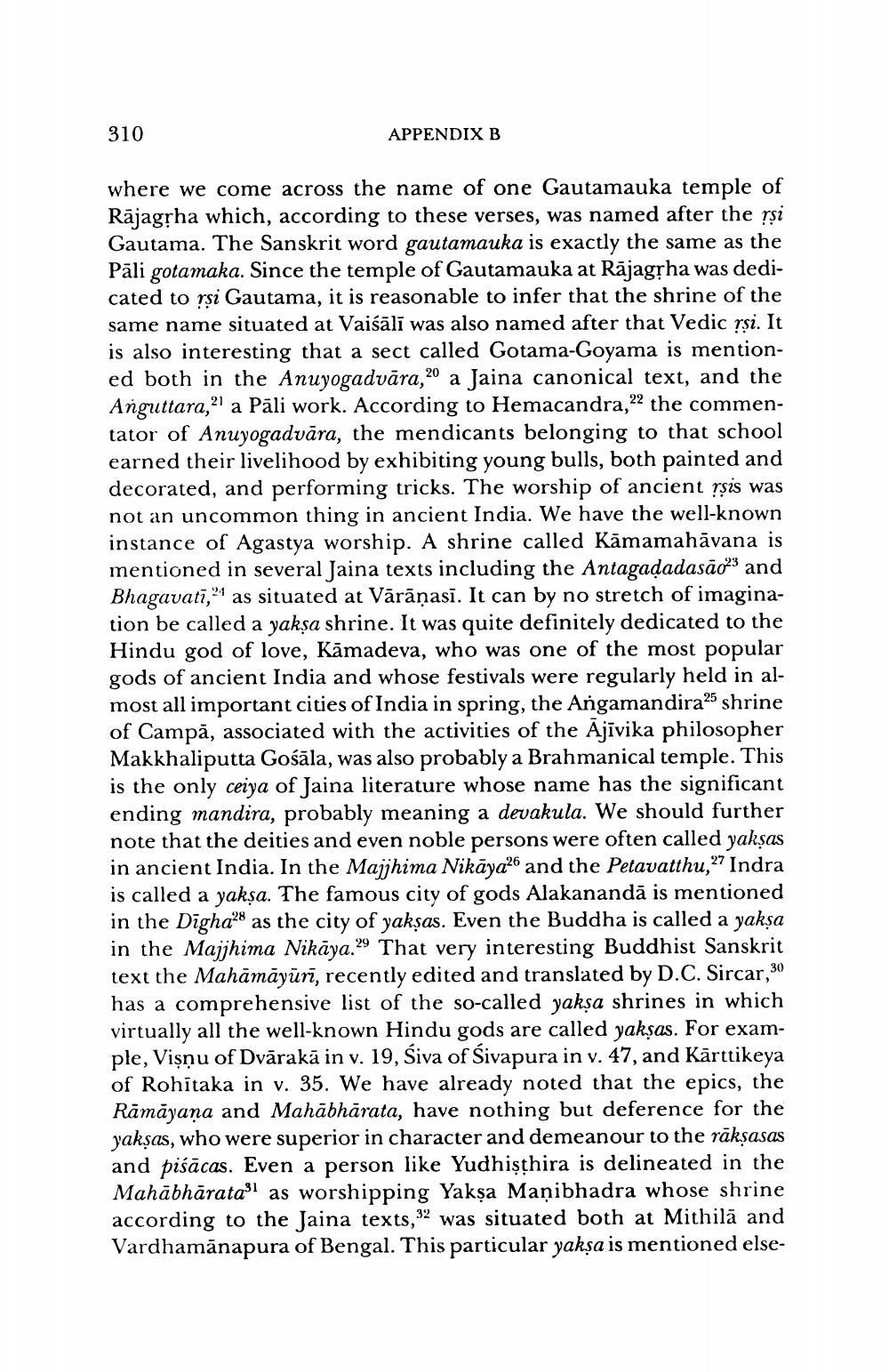________________
310
APPENDIX B
where we come across the name of one Gautamauka temple of Rajagṛha which, according to these verses, was named after the rşi Gautama. The Sanskrit word gautamauka is exactly the same as the Pāli gotamaka. Since the temple of Gautamauka at Rajagṛha was dedicated to rşi Gautama, it is reasonable to infer that the shrine of the same name situated at Vaiśālī was also named after that Vedic rși. It is also interesting that a sect called Gotama-Goyama is mentioned both in the Anuyogadvāra,20 a Jaina canonical text, and the Anguttara," a Pāli work. According to Hemacandra,22 the commentator of Anuyogadvāra, the mendicants belonging to that school earned their livelihood by exhibiting young bulls, both painted and decorated, and performing tricks. The worship of ancient ṛṣis was not an uncommon thing in ancient India. We have the well-known instance of Agastya worship. A shrine called Kamamahāvana is mentioned in several Jaina texts including the Antagaḍadasão" and Bhagavati, as situated at Vārāṇasī. It can by no stretch of imagination be called a yakṣa shrine. It was quite definitely dedicated to the Hindu god of love, Kamadeva, who was one of the most popular gods of ancient India and whose festivals were regularly held in almost all important cities of India in spring, the Angamandira25 shrine of Campă, associated with the activities of the Ajivika philosopher Makkhaliputta Gośāla, was also probably a Brahmanical temple. This is the only ceiya of Jaina literature whose name has the significant ending mandira, probably meaning a devakula. We should further note that the deities and even noble persons were often called yakṣas in ancient India. In the Majjhima Nikaya26 and the Petavatthu,27 Indra is called a yakṣa. The famous city of gods Alakananda is mentioned in the Digha as the city of yaksas. Even the Buddha is called a yakṣa in the Majjhima Nikaya.29 That very interesting Buddhist Sanskrit text the Mahāmāyārī, recently edited and translated by D.C. Sircar,30 has a comprehensive list of the so-called yakṣa shrines in which virtually all the well-known Hindu gods are called yakṣas. For example, Viṣṇu of Dvārakā in v. 19, Śiva of Śivapura in v. 47, and Kärttikeya of Rohitaka in v. 35. We have already noted that the epics, the Rāmāyaṇa and Mahabharata, have nothing but deference for the yakṣas, who were superior in character and demeanour to the rākṣasas and pisacas. Even a person like Yudhisthira is delineated in the Mahābhārata31 as worshipping Yakṣa Manibhadra whose shrine according to the Jaina texts, 32 was situated both at Mithila and Vardhamanapura of Bengal. This particular yakṣa is mentioned else




